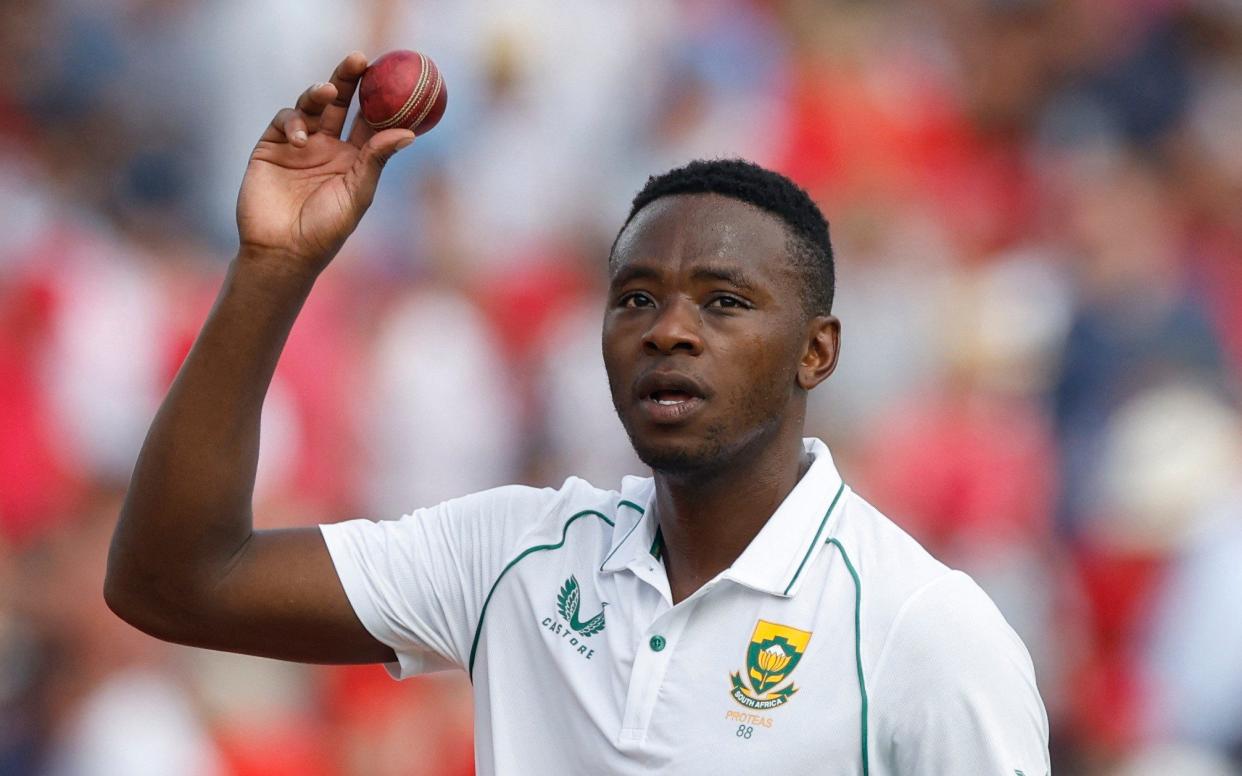Kagiso Rabada cements place among fast bowling greats with five-wicket haul

On the first evening at Lord’s, Kagiso Rabada spoke about the qualities of the South Africa pace attack. “We’ve got pace, we’ve got bounce, we’ve got guys who can swing it - we’ve got guys who can bowl quick bumpers,” Rabada said, summarising the different threat of the quartet.
Had he been the sort to use the royal we, Rabada could just as easily have been speaking about himself: a bowler of such completeness, with so many ways to dislodge a batsman, that he is a varied attack all in one.
There is the pace: an average of 86mph across England’s first innings, rising to 90mph. There is the bounce: while, at 6ft 1in, he is on the short side for a pace bowler, Rabada’s bouncer is perhaps his signature weapon, speared into the batsman at a fiendish height - the sort that cannot be played with any control and yet is too low to duck. There is useful swing allied to abundant seam: swing’s less glamorous, but altogether more reliable, cousin.
More than anything, there is a sense of how to hunt wickets. Rabada’s run-up is notably short for a pace bowler. It begins undemonstratively, but - while remaining wonderfully smooth - rapidly acquires pace as he accelerates across the turf. As he explodes into his release, Rabada combines his physical gifts with attacking instincts and a wonderfully adroit cricketing brain, able to use his full armoury to adjust to the changing demands of the moment and the batsman on strike.
The upshot is among the most dangerous bowlers to have ever bowled in Test cricket. Rabada takes a wicket every 40 balls, fewer than once every seven overs. It is the fifth lowest strike rate in Test history and the lowest of anyone to take 100 wickets since George Lohmann, who played his last Test in 1898. No one has ever taken more Test wickets at a lower strike rate than Rabada.
The opening two days at Lord’s have provided a wonderful distillation of Rabada’s qualities as he took five for 52. First, with the new ball Rabada dissected the techniques of England’s openers like a surgeon with a fine scalpel - precision befitting the son of one of South Africa’s leading brain surgeons.
On the second morning, with a slightly old ball and in slightly better batting conditions, Rabada gave a further illustration of his craft. His first over was almost immaculate, stained only by a hooked boundary from Ollie Pope, when the batsman wasn’t completely in control; it should have been marked by Pope’s wicket, but Sarel Erwee squandered a regulation chance at slip, juggling the ball before it crashed to the turf.

No matter. Rabada needed only four more deliveries at Pope to induce him to play on from a full delivery. The sight of Stuart Broad backing away and trying to scythe the ball can cause opposing quicks to mislay their equilibrium, resorting to predictable bouncers. To Rabada, it allowed him to showcase his limited-overs skills - something too few attacks have done against England this summer - and snare Broad with a slower ball. Eschewing the temptation to bounce opposing tailenders, James Anderson was greeted by a delivery that was too quick, too full and had too much swing.
As the wicket was confirmed after Anderson’s futile review, Rabada broke out into a broad grin and was saluted by his team-mates congratulating him on his place on the Lord’s honours board. It was also an opportune moment to consider where Rabada ranks in the pantheon of South African bowlers.
The headline numbers give an indication of the company that he keeps. Rabada’s 248 wickets are already the seventh best for his country, his strike rate the best of anyone with 100 wickets. Only one South African, Neil Adcock, has taken 100 wickets while averaging lower than Rabada’s 22.2 - fractionally lower than both Dale Steyn and Allan Donald. Set against this pair, his predecessors as chief strike bowler, Rabada is only lacking for longevity and having played in a better era for bowlers. In matches that Steyn played, the overall batting average was 32, five runs more than in games that Rabada has played, making Steyn’s record more exceptional in context.
Rabada is a bowler almost without discernible weaknesses. He prefers playing at home, but still averages 26 away; only Asia, where he averages 36, has not quite seen the best of him. He has played nine Test opponents; he averages 25 or under against eight of them, and a hardly dear 28 against the other, New Zealand. He has a slight preference for right-handers, but still dismisses a left-hander every 45 balls. He’s an outstanding new ball bowler, yet averages 19 with the old ball - the lowest of any Test bowler with 100 wickets since 2006.
And so, aged 27 there would seem little limit to the records that a bowler of Rabada’s capacity could set. Yet South Africa only have 28 Tests scheduled during the 2023-27 Future Tours Programme, 15 fewer than England. Administrators are doing their best to manage what batsmen cannot: stopping Rabada from taking wickets with extraordinary haste.

 Yahoo Movies
Yahoo Movies 
